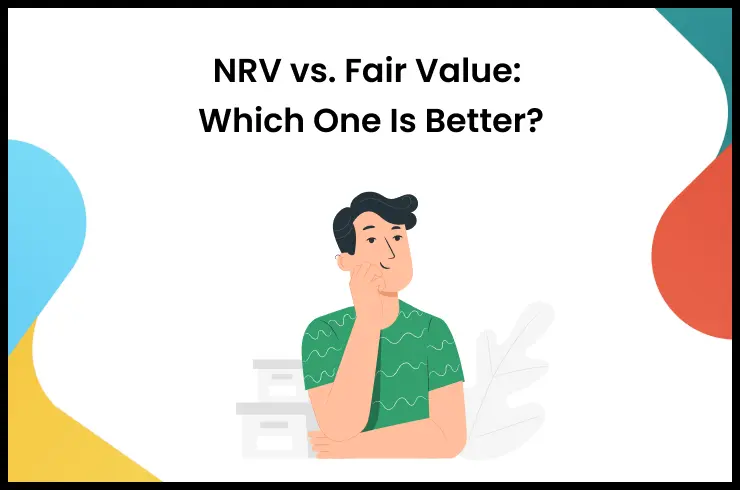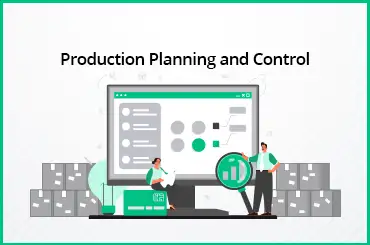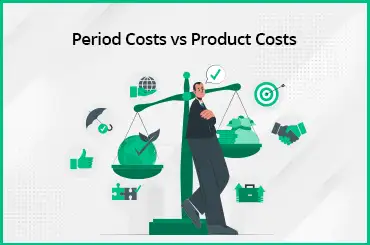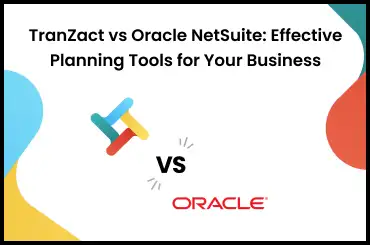Here's your chance to know what is scenario planning and how it can help businesses prepare for potential future events and uncertainties. Scenario planning fosters immense control and development in business operations and environmental changes over time. It can be useful to tackle positive scenarios like the sudden popularity of products and meet customers' demands.
The decision-makers in the company use the potential outcomes, impacts, and responses provided by scenario planning. It helps them to develop an informed and well-aware mechanism to identify future adversities and business trends. Read this blog to know all about scenario planning analysis and how it can benefit your business!
What Is Scenario Planning?
Scenario planning is also called scenario analysis, scenario prediction, or scenario thinking. It is a method or mechanism utilized by various organizations to form decisions for long-term goals. It refers to the process of identifying and finding ranges and details of the potential issues and the ways in which it impacts the businesses. Analysts use demographics, resource scenario planning analysis, market trends, demand and supply, and customer interests.
The analysis of financial earnings, cash flow estimation, and financial planning tools allows businesses to develop an integrated and in-depth approach to handling business uncertainties. It involves visualizing and mitigating the risks involved in business and planning for growth and development in such situations.
Scenario planning assists firms in planning for future challenges by utilizing assumptions to reduce impact. It engages with the positive and negative aspects of the market, systems thinking, and other social phenomena to formalize and develop insights.
Why Is Scenario Planning Important?
Scenario Planning provides a competitive edge and allows the company decision-makers to react properly and document their course of action well in case of a crisis. The framework can be used to get insights on plans, and forecasts, and ensure better analysis of budget.
Here are the key reasons why scenario planning techniques are important -
-
They focus on gaining answers to critical questions in achieving a particular target and getting the required results.
-
Maximize the enterprise value with a forward-thinking approach, define goals, look out for new business opportunities, and tackle risks.
-
Live scenarios are updated based on data collection and screening multiple scenarios to stay updated with the possible outcomes.
-
Combined scenario analysis permits companies to analyze the financial impacts of multiple events and compare and evaluate the impact of various factors on the company's development at the same time.
-
It helps with corridor planning and documenting alternative outcomes for a single scenario.
Advantages and Disadvantages of Scenario Planning
Scenario planning techniques may take time, consistent efforts, and capital investment to bring into force. They identify specific uncertainties and portray different realities of possible future aspects of the business. Here are the advantages and disadvantages of scenario planning:
**Advantages of Scenario Planning **
The key benefits of scenario planning are as follows -
-
Scenario planning allows decision-makers and the board of directors in the company to comprehend the various aspects and outcomes of unforeseen future circumstances.
-
It gives an edge to the various departments in the company like finance and operations to develop initial responses and answers to the issues.
-
The company can use the insights offered by scenario planning and discuss the same with key personnel to implement their recommendations.
-
Scenario planning assists management in preparing for potential difficulties and developing a strategy using a demand curve to combat undesirable conditions.
**Disadvantages of Scenario Planning **
The drawbacks associated with scenario planning are as follows -
-
Managers may not be able to rely excessively on scenario planning as it may result in poor judgments that are detrimental to the business.
-
The scenario planning model must be updated at regular time intervals for a better review of circumstances.
Types of Scenario Planning
It is recommended to take into account the multiple types of scenarios to settle for the desired format. They are discussed below -
- Quantitative Scenarios
It is a popular means for scenario planning for annual business forecasts to gain access to the best and worst-case scenarios based on the model inputs and data collection. Such models are easy to change and alter the involved factors.
- Normative Scenarios
Such scenarios are primarily geared toward the achievement and fulfillment of the goals and ideals set by the company. They are less oriented toward objective analysis and establish the achievable end goals or preferred outcomes for the company. The main focus is on the future perspective of how the company would work.
- **Operational Scenarios **
They focus on the immediate and instant impact of input and explore short-term strategic projections and possibilities.
- **Strategic Management Scenarios **
Strategic management scenarios focus on the products and services, how they interact with the environment, and the changing market trends. They involve a broad view of the industries, economic conditions, and the world view as a whole. It fosters freedom to brainstorm ideas and work with analysts and forecasters for decision-making.
- **Probability-Based Scenarios **
Probability-based scenarios involve a hybrid form of scenario planning to form and forecast scenarios. They use a large cross-impact matrix and examine every cell to check the business impact and analyze the cross impacts of columns on business. This form of scenario is typically utilized in engineering firms and other utility companies.
How to Use Scenario Planning
The main goal of scenario planning is to define and gain insights into critical and plausible scenarios. They aim to conceptualize the impact of these scenarios and develop responses to combat issues for business growth. Businesses can enhance their production and marketing outcome by assessing suitable types of scenario planning and using them regularly.
One of the best-observed ways to come up with innovative actions is to organize workshops, meetings, and discussions with the participants to share their outlook, and brainstorm ideas.
Here is how you can create scenarios and use them wisely -
- **Identify the end goals **
Businesses must define the driving forces that may affect the business. It may include analyzing the plausible changes in society, economics, political systems, technological developments, social and cultural changes in the future, and their effects on the business.
- **Identify critical uncertainties **
Choose the key areas of focus from the complete list of plausible forces affecting business. This step prioritizes the areas of key concerns that need to be combatted. Eg- Customer Demand and Food Prices
- Develop possible scenarios
Develop a matrix with the stated critical uncertainties. Check the possible outcomes and results you may get by experimenting with the uncertainties. It allows you to develop around four possible scenarios or situations for future reference and see what path is ideal.
- **Discuss the outcome ***
Another crucial aspect is to evaluate the consequences of every scenario and develop goals and ideals based on them. You can use goal-setting guides and worksheets for easy access.
Scenario** Planning vs Business Continuity Planning **
Scenario Planning and Business Continuity Planning are important and vital components of a business. They help to define the administrative, financial, and technical operations for tackling difficult and complicated situations. The primary focus of both these planning mechanisms is to engage in procedures and processes to manage the business functions throughout unexpected events like health crises, natural disasters, and other geopolitical scenarios.
Both these processes are often confused with one other. The difference between Scenario Planning and Business Continuity Planning are as follows -
| **Characteristics ** | Scenario Planning | **Business Continuity Plan ** |
|---|---|---|
| Meaning | Scenario Planning refers to the process of identifying the potential harms and impacts that the business may go through in the future and how to manage its positives and negatives. | A Business Continuity plan refers to the business's capacity to handle the daily activities and operations after an unwanted and unplanned event has occurred. |
| **Focus ** | It focuses on a business perspective for a longer time duration. | It focuses on specific disasters that may halt business operations in the short term. |
| **Type of Events ** | It includes events like the potential scenario, changing market trends, changes in demand and supply, consumer needs, and financial and geopolitical scenarios. | It includes events like natural disasters like earthquakes, tornados, and warehouse fires. |
| **Scope ** | It focuses on creating a full-proof plan for the future and finding ways to mitigate plausible occurrences and risks in business operations. | It involves a strategic approach to handling the current grievances due to the disaster and getting back to normal operations. |
Scenario Planning Work Approach
It is important to understand how to undertake actions within the scenario planning framework. Follow the below-mentioned approach for smooth functioning.
Actions to take:
- The senior management, prominent staff members, and stakeholders must be dedicated to addressing and considering the issues.
- Make sure to keep an eye on the resource differences between scenarios.
- The scenarios and their subsequent assumptions must be stated clearly and there must be a limit on the number of scenarios.
- The scenario plans must cover a holistic view of the future.
- KPIs, scenarios, and assumptions must be checked thoroughly and updated timely in real-time.
Actions to avoid:
- It is not advisable to work on developing the possible scenarios without a clear direction, path, and information on the issues.
- Avoid creating many conflicting scenarios at once.
- Make sure to not be fixated on one scenario.
**Steps to Better Scenario Planning **
Timely scenario planning can be a lifesaver for various small, medium, and large-scale businesses. Therefore, ensure to develop the scenarios without being obligated to develop the perfect scenario and achieve 100% accuracy at once.
Take a look at the given steps to enhance your scenario planning approach -
- **Create simple, easy-to-understand, and selected scenarios **
It is crucial to develop a limited number of scenarios, preferably four to five scenarios. It may get daunting to study and produce valid outcomes by analyzing a vast number of scenarios. Make sure to keep the scenarios simple, allowing company decision-makers to prioritize every scenario equally and efficiently.
- **Build a quick response strategy **
The scenario must be detailed and thoroughly constituted to assess the possibilities of success or failure of the plan. Develop a framework with updated guidelines to foster easy decision-making. Check the progress of the new framework in a timely manner and monitor it in real time to quickly make changes to the plan.
- **Identify the triggers during uncertain moments **
The company teams and several departments must define how to react and respond to unwanted occurrences quickly. The multiple scenarios must be handled professionally. The company must develop a series of response actions to handle the scenario-based assumptions.
Businesses engage in studying historical analytics, and political scenarios, along with economic, environmental, and other societal aspects to focus on reviving business operations and brainstorming ideas and solutions.
Scenario Planning Strategies
Scenario planning has a vast scope and can be utilized in a variety of ways to ensure cost-to-benefit and meet the expectations portrayed by companies.
For this, you must ensure that the implemented strategies and policies are regularly evaluated to meet the diverse market trends. Here are the key strategies to follow for systematic scenario planning -
- Regular discussions** with team members**
Conducting regular meetings and discussions with various departments and team members can propagate acknowledging the issues and defining the possible solutions. Team efforts are key to success with scenario planning.
- **Spend time on the development of scenarios and analyze the crisis situations **
More time must be spent to create minimum yet simple and vital scenarios and decide the plan of action. Spend less time worrying about the "What if" situations.
- Define the crucial outcomes
A business must recognize its end goals with strategic planning, and set aside the scope to enhance the outcome. Define the goals, time frame, positives, and negatives that must be met towards the end.
- Analyze and discuss the possible paths for scenarios and the designated scope
It is key to define the direction for each of the scenarios, check the validity, and assess how it will produce optimum outcomes.
- Work on achieving success
Formulate a master plan and the subsequent short-term plans to reach the goals. Regular analysis, changes, and modifications are important to get desired results. Experiment with different conditions for every scenario and mitigate operations.
- **Change strategies to meet evolving time trends **
Many external factors affect the working and business plan. Keep these external factors in check, amend strategies, and use out-of-the-box mechanisms as well.
**Scenario Planning Best Practices **
Companies can benefit tremendously if they follow all the best practices for scenario planning. It eliminates the chances of errors and negative outcomes throughout the scenario planning process and enhances the ability to achieve desired results.
Check out the best practices below -
- Choose the best team members
Large organizations should have financial planning and analysis groups, but leaders from many operational areas, such as business units and human resources, must also participate in this effort.
- **Collect adequate data **
Finance teams require the necessary data to develop reliable models, such as historical and comparative sales data, headcount and planned growth, and general ledger actuals. They must also comprehend the expenses of producing fundamental, additional products and services.
- **Start out with basic and simple scenarios **
To manage expenses and revenues, finance teams should construct basic low, medium, and high models. A low scenario prioritizes cost savings while still providing high-quality items on time. Based on the last period's outcomes, a medium scenario assumes that sales would continue to expand. A high scenario is based on increased demand and faster sales as a result of market shifts. The goal is to increase capacity without incurring additional costs.
- Accurate** break-even analysis **
In scenario planning, break-even analysis is crucial to assess the financial feasibility of various scenarios by examining the minimum level of sales or revenue required to cover costs and achieve profitability.
- **Find strategic balance **
The scenario team should decide on which variables deserve more consideration and which uncertainties are most likely to be crucial to the success of the strategy. This is done based on their knowledge and discretion to reduce the list of potential impacts.
- Continuously monitor** trends**
Keep an eye out for strategic patterns and early indicators that lead to diverse scenarios, transitioning from the imaginative to the real world.
**Safeguard Your Business From Uncertainty With Efficient **Scenario Planning
Scenario planning is a highly popularized mechanism amongst complex businesses and can be a game changer when accompanied by the right resources and objectives. It is a valuable tool for businesses to prepare for an uncertain future by considering a range of potential scenarios and their implications.
By taking a proactive approach to identifying potential risks and opportunities, your SME business can develop effective strategies to navigate challenges and capitalize on emerging trends. TranZact provides smart business dashboards with real-time business insights to ensure complete transparency and effective scenario planning for your business!
FAQs on Scenario Planning
1. What are the types of scenario planning?
The types of scenario planning include Normative Scenarios, Probability-Based Scenarios, Quantitative Models, and Interactive Scenarios.
2. What are the five types of scenario planning processes?
The five crucial steps of the scenario planning process include brainstorming upcoming scenarios, identifying the key concerns, creating a template, creating and analyzing the scenario, and updating the policies timely.
3. What is the requirement for scenarios?
The requirement for scenarios in scenario planning includes a general statement defining initial values, possible outcomes, and inputs and outputs in the respective cells.















